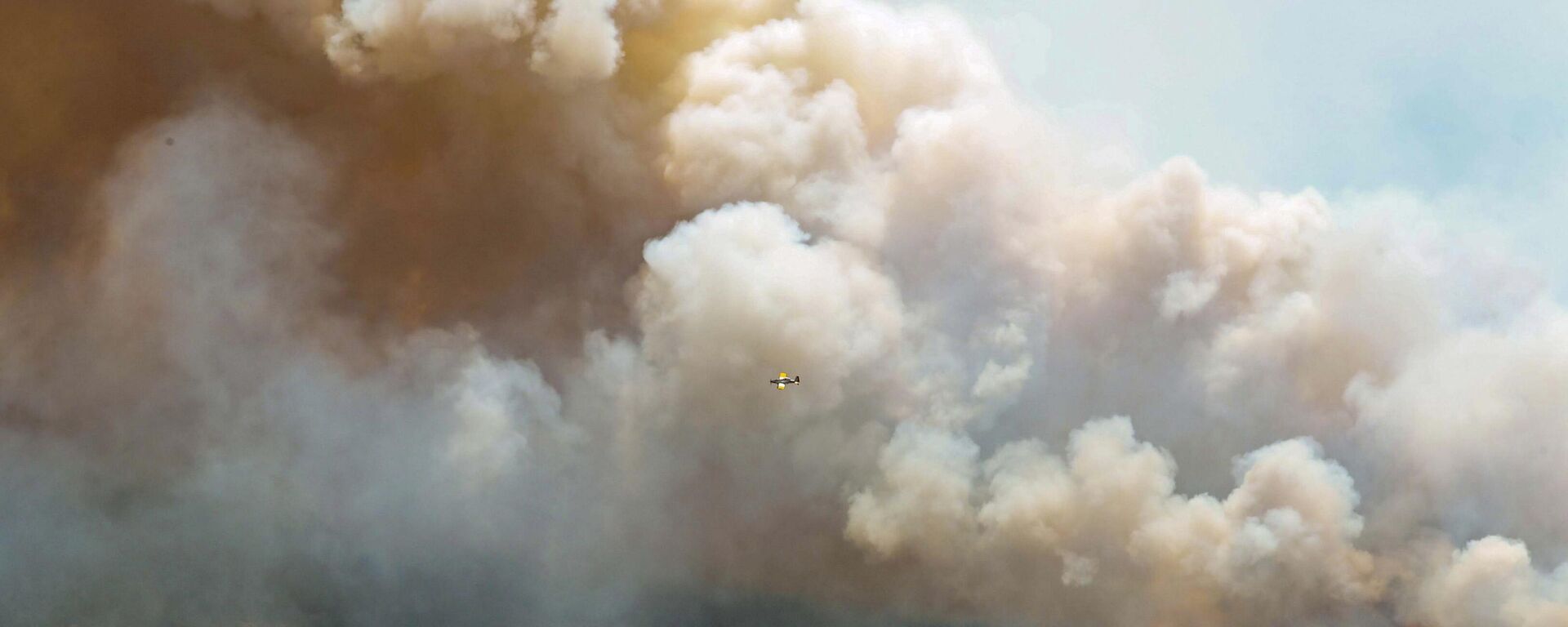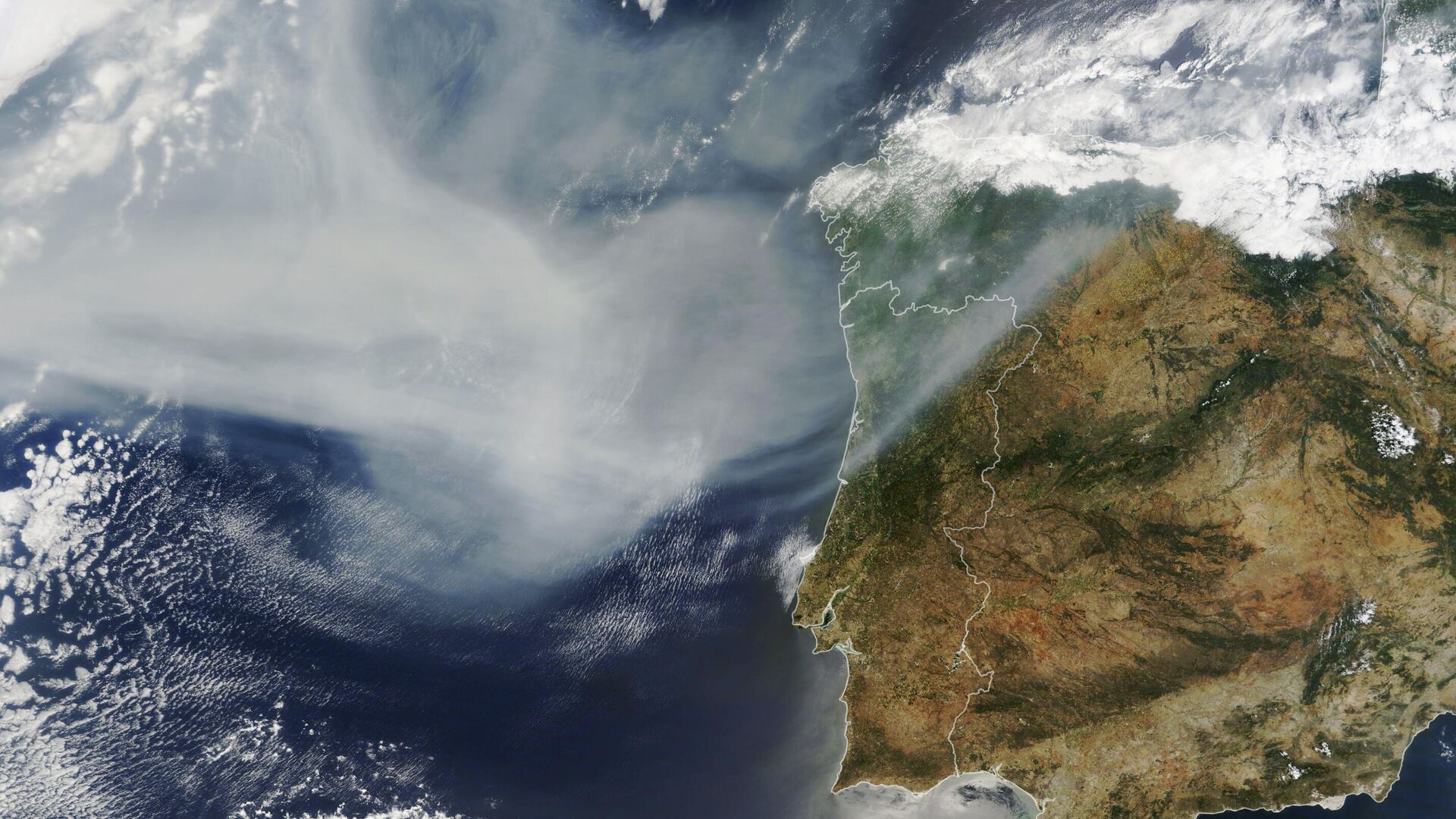https://sputnikglobe.com/20240306/canada-warns-of-wildfire-season-that-could-break-record-set-last-year-1117153751.html
Canada Warns of Wildfire Season That Could Break Record Set Last Year
Canada Warns of Wildfire Season That Could Break Record Set Last Year
Sputnik International
Last year, Canadian wildfires burned about 48 million acres of forest—roughly the equivalent to the size of Finland, as well as a 170% increase over the previous year, according to the Canadian Interagency Forest Fire Center.
2024-03-06T03:49+0000
2024-03-06T03:49+0000
2024-03-06T03:49+0000
americas
canada
fire
forest fire
natural disaster
wildfire
climate change
https://cdn1.img.sputnikglobe.com/img/07e7/06/1b/1111511479_0:149:2856:1755_1920x0_80_0_0_e150abaeb7f8195b041587f5d4a3d5ef.jpg
Last year, Canadian wildfires burned about 48 million acres of forest—roughly equivalent to the size of Finland. That was a 170% increase over the previous year, according to the Canadian Interagency Forest Fire Center. But Canada’s emergency preparedness minister is warning that this year’s wildfire could be even worse than the record-breaking season of last year, a recent report reveals.The Canadian Interagency Forest Fire Center found more than 150 “zombie fires” have been burning underground during this past winter—93 fires in British Columbia and 55 in Alberta. A majority of these fires have been labeled as “under control” by Canadian authorities, but experts fear that could change as early as this spring, as wind will soon pick up.“The perimeters are thousands and thousands of kilometers long. [Firefighters] haven’t gone and put all these hot spots out,” Flannigan said. “These fires can grow.”Last year’s wildfire season shattered records for the amount of Canadian forests that burned and created plumes of smoke that darkened skies in the Midwest and East Coast during the summer. The fires’ smoke, especially fires that burned in Quebec, reached major cities in the East Coast and wreaked havoc on the air quality there.The risk of wildfires across the world have increased due to human-induced climate change. This shift in weather patterns and temperatures creates an environment in Canada that is hot, dry and filled with wind gusts—and is therefore the “perfect storm” for creating wildfires. The lack of snow and drought in Western Canada is also propelling fears that this year’s fire season will outgrow last year’s.And both provinces have already seen new fires burning this year alone. Alberta was prompted to start its wildfire season in late February as a result.Harjit Sajjan, Canada’s emergency preparedness minister, reassured that Canada was better prepared to fight fire this year and evacuate communities, while federal money has provided training for an additional 600 firefighters across the country. But Sajjan cautions that reports show this year's wildfire season could still be worst than last. One positive in the face of such dismal news: some of the “zombie fires” burning in British Columbia and Alberta may not pose an increased risk of triggering wildfires in the spring because the vegetation there has already been burned from last year’s fires.
https://sputnikglobe.com/20230818/tens-of-thousands-forced-to-evacuate-as-wildfires-rage-across-canadas-northwest-1112693639.html
americas
canada
Sputnik International
feedback@sputniknews.com
+74956456601
MIA „Rossiya Segodnya“
2024
News
en_EN
Sputnik International
feedback@sputniknews.com
+74956456601
MIA „Rossiya Segodnya“
Sputnik International
feedback@sputniknews.com
+74956456601
MIA „Rossiya Segodnya“
canada fires, canadian fires, wildfires, climate change, natural disaster, forest fire, fire in canada, wildfire in canada, canada is burning, burning canada, canada on fire, emergency situation, flames eat canada
canada fires, canadian fires, wildfires, climate change, natural disaster, forest fire, fire in canada, wildfire in canada, canada is burning, burning canada, canada on fire, emergency situation, flames eat canada
Canada Warns of Wildfire Season That Could Break Record Set Last Year
The fires that raged through Canada last year never stopped, they simply moved underground. The “zombie fires” as they are being called in the media, persist during the winter and are fed by porous peat and sphagnum moss ground cover.
Last year,
Canadian wildfires burned about 48 million acres of forest—roughly equivalent to the size of Finland. That was a 170% increase over the previous year, according to the Canadian Interagency Forest Fire Center. But Canada’s emergency preparedness minister is warning that this year’s wildfire could be even worse than the record-breaking season of last year, a recent
report reveals.
The Canadian Interagency Forest Fire Center found more than 150 “zombie fires” have been burning underground during this past winter—93 fires in British Columbia and 55 in Alberta. A majority of these fires have been labeled as
“under control” by Canadian authorities, but experts fear that could change as early as this spring, as wind will soon pick up.
“We’ve seen this before but never at this scale,” said Michael Flannigan, a wildfire expert and professor at Thompson Rivers University in British Columbia. “I’ve been watching fire in Canada and abroad since the late ’70s. I’ve never seen anything like this.”
“The perimeters are thousands and thousands of kilometers long. [Firefighters] haven’t gone and put all these hot spots out,” Flannigan said. “These fires can grow.”
Last year’s wildfire season shattered records for the amount of Canadian forests that burned and created plumes of smoke that darkened skies in the Midwest and East Coast during the summer. The fires’ smoke, especially fires that burned in Quebec, reached major cities in the East Coast and wreaked havoc on the
air quality there.
The risk of wildfires across the world have increased due to human-induced climate change. This shift in weather patterns and temperatures creates an environment in Canada that is hot, dry and filled with wind gusts—and is therefore the “perfect storm” for creating wildfires. The lack of snow and drought in Western Canada is also propelling fears that this year’s fire season will outgrow last year’s.
“Even on the -40, -42 Celsius days, we were still seeing smoke,’’ said Sonja E.R. Leverkus, the senior fire lead at a private wildfire fighting service in northeastern British Columbia. “So much that as you drove you’d be smelling the smoke and coughing in your truck.”
And both provinces have already seen new fires burning this year alone. Alberta was prompted to start its wildfire season in late February as a result.
Harjit Sajjan, Canada’s emergency preparedness minister, reassured that Canada was better prepared to fight fire this year and evacuate communities, while federal money has provided training for an additional 600 firefighters across the country. But Sajjan cautions that reports show this year's wildfire season could still be worst than last. One positive in the face of such dismal news: some of the “zombie fires” burning in British Columbia and Alberta may not pose an increased risk of triggering wildfires in the spring because the vegetation there has already been burned from last year’s fires.

18 August 2023, 01:43 GMT



